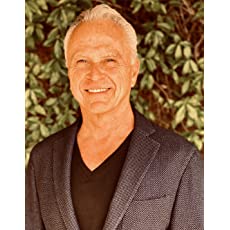Takeaway
In medicine, all too often the optimal approach for diagnosis or therapy is not entirely clear. Acknowledging uncertainty with your patient is a sign of a humility that can strengthen the connection.

Connecting with Patients | April 7, 2021 | 3 min read
By Steve Bierman, MD, Del Mar, California
The British philosopher Bertrand Russell long ago foresaw that as the universe of human knowledge continues to expand and the mental capacity of the individual remains finite, specialization becomes inevitable. We now have specialists in medicine and even subspecialists—cardiologists, electrophysiologists, neurologists, hepatologists, oncologists, immunologists, and so on. Yet, before us sits not a heart or a brain, not a liver or a cell, but rather a whole person—a person full of wants and woes, worries and wishes. How can we, with our finite expertise, ever succeed in healing all patients in the face of such overwhelming complexity?
One of the most challenging tasks in modern medicine is reading a plain chest x-ray. The shadow of an intricate three- dimensional structure, the human thorax, is cast on a monotone two-dimensional film, with objects and artifacts overlapping and obfuscating. Tomorrow morning, in a quiet room away from the noise of the ED, a radiologist, coffee cup in hand, will study the film and render her reasoned interpretation. But that’s tomorrow morning. Now, the ED physician—with seven other patients needing urgent attention—must decide: Is the middle third (the mediastinum) of this x-ray widened or not? Someone’s life depends on it. The x-ray is of a 60-year-old hypertensive man with sudden excruciating substernal chest pain. His cardiogram suggests coronary artery occlusion (a heart attack), but the medication necessary to relieve the occlusion could kill him if, instead of a heart attack, his aorta is splitting apart. A widened mediastinum, where the aorta is located, would suggest the latter.
It’s a small community hospital, miles from a more sophisticated facility. Time is of the essence. There are no other tests available to ascertain the diagnosis. The quiet truth is that no ED physician can read a plain chest x-ray as well as a radiologist. And no ED physician can be 100 percent correct in discerning a widened mediastinum. This mistake is inevitable. Somewhere, at some time, under urgent conditions, the physician will decide to administer a blood-thinning thrombolytic medication to someone whose aorta is dissecting. And that patient will die of internal bleeding.
Knowing this, how do ED physicians get up each day and drive to work—toward the inevitable collision of their high intentions and human fallibility? And for that matter, how do surgeons scrub in knowing a welter of unmapped anomalies await? Failure haunts all healers. And so, sometimes, some clinicians puff up, inflate. Not consciously, but as with most defense mechanisms, unconsciously. Our egos, like balloons, bloat with the hot air of hubris and rise to carry us over the abyss of self-doubt.
“He thinks he’s a god,” murmur his colleagues.
Patients ask, “How long do I have? What will happen next? What are my odds? Why me?”
And the answers, “You have two years at best. You will probably have nausea and vomiting. You have a 20 percent chance of survival. Why you? Because you have a genetic mutation.” Perhaps not the answers our patients had wished for. But answers nonetheless, answers we’re expected to know, betraying nothing of the doubt and uncertainty below.
While understandable, defensive puffery is not an acceptable strategy for healers. It produces false certainties that may dash our patients’ best hopes. Creating an illusion of our own infallibility is an easy antidote to the potential paralysis of self-doubt, but a poisonous one.
Knowing where uncertainty lies insures us against deluding ourselves and our patients. No one can foresee the course of any patient’s recovery or decline—though we can influence it positively or negatively with our informed words and deeds. This knowledge of what we do not know, paired with the recognition that we can only do your best in any given moment with the information we have, that mistakes are inevitable, and that forgiving those errors in advance is the best remedy, informs a humility that allows healers to honestly and wisely impart hope and trust.
When asked to predict the outcome of a patient with a dire diagnosis, the only right answer is, “I don’t know. But what I do know is that while this isn’t the information we hoped for, some (offer the survival percentage) people do survive this condition. This is the care plan I recommend, based on my best knowledge at this time. I will be with you. Let’s see how well you do.”
Humility, not hubris—a graceful bridge over the abyss of self-doubt.
This piece expresses the views solely of the author. It does not represent the views of any organization, including Johns Hopkins Medicine.

